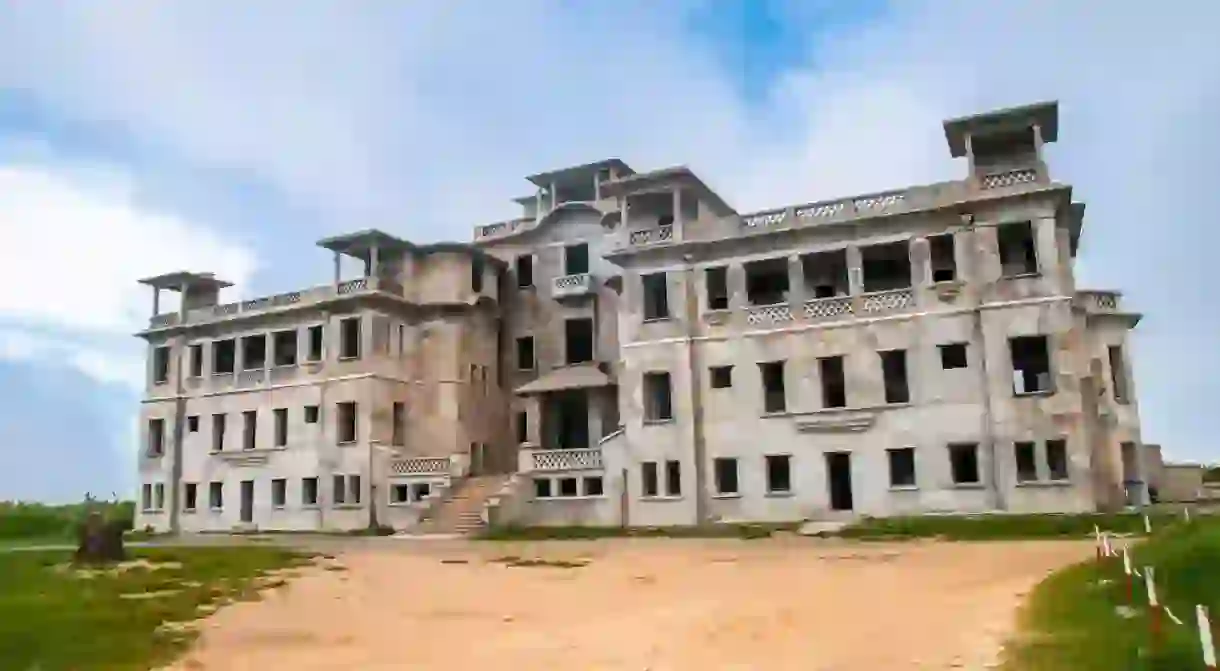A Tour of Cambodia's Architectural Landmarks

From ancient temples and religious monuments to quirky statues, dilapidated remnants of a bygone era and stunning contemporary style, Cambodia’s architectural offerings span the board. Here are some of the top spots to visit during your time in the Kingdom of Wonder.
Angkor Wat
No visit to Cambodia is complete without a stop-off at the world’s largest religious monument. Dating back to the 12th century, King Suryavarman II’s creation was the epicentre of the great Khmer Empire. Located in Siem Reap’s sprawling Angkor Wat Archaeological Park, it is the country’s number one attraction, with the majority also visiting nearby Bayan Temple and Ta Prohm during a day trip.
Independence Monument
Designed by influential Cambodian architect Van Molyvann, Independence Monument stands proud in the capital of Phnom Penh. Built in 1958 to commemorate the country’s independence from France five years earlier, it was modelled on the central tower of Angkor Wat. A mini version can be found in Kampong Chhnang city and Kep province. The neighbouring park is home to a statue of former King Father Norodom Sihanouk, who died in 2012.

Post Office Square
Coined the historic quarter, this spacious square is home to a series of impressive buildings that hark back to Cambodia’s French colonial period. The Post Office stands at the centre, with the building built in 1890. A huge restoration project was completed in 2004, when it reopened and remains in pristine condition today. Neighbouring Van’s Restaurant is housed in the former office of Indochina Bank and is another example of the architecture of the time. Various other buildings in different states of dilapidation can be seen in the area.
Olympic Stadium
The National Sports Complex, affectionately known as Olympic Stadium, is another Van Molyvann feat. Despite its current gritty appeal, the 84,000-seat outdoor arena in Phnom Penh is a shining example of the New Khmer Movement of the 1950s and 1960s. Built in 1964, the stadium has hosted a series of international sporting events, and is a popular spot with Cambodians keen to keep fit. At dusk and dawn, the concrete structure comes alive with crowds of people flocking to take part in the aerobics classes – an interesting way to spend sunset.

Durian Roundabout
The Marmite of fruit, durian is grown in abundance across Kampot province and whether you love it or hate it, the pungent fruit can be found – and smelled – throughout the city and surrounding countryside. Popular among locals, the province’s durian pride runs so strong that a roundabout in the shape of a giant durian, surrounded by various other tropical fruits, forms Kampot city’s centrepiece.
Central Market
Psar Thmei, known as Central Market, is a landmark in the capital. Having opened in 1937, the art-deco style domed hall and its four arms house hundreds of stalls selling everything from jewellery, clothing and fabrics to food, flowers and trinkets. The market’s initial designs were drawn up by French architect Louis Chauchon, with construction overseen by fellow French architects Jean Desbois and Wladimir Kandaouroff. It underwent a $4.2 million makeover between 2009 and 2011.

Bokor Hill Station
A trip up Bokor Mountain comes highly recommended with a collection of spookily abandoned French colonial buildings sitting at its peak. Built in the 1920s as a luxury retreat for royalty and the rich and famous, a day trip up Bokor, which sits about 37km west of Kampot city, doesn’t fail to disappoint. A derelict hotel and casino, crumbling church and the remnants of royal residences can be explored, offering an intriguing insight into the glory days of the country’s elite.
Bamboo Bridge
You’d better hurry to catch the bamboo bridge in Kampong Cham because rumours are rife that the end of the road is close for the iconic structure. The engineering feat stretches 1km across the Mekong River from Kampong Cham to Koh Paen, is made entirely from bamboo and can hold lorries and horse and carts. The seasonal structure is built during dry season when the water levels are too low for the ferry to operate. When the monsoons come, the bridge is washed away and rebuilt the next year. A new concrete bridge is being constructed close by.

Battambang Walking Tour
The city of Battambang is home to Cambodia’s largest collection of preserved colonial buildings and a stroll through the compact city, especially along the riverside, shows them in all their glory, as well as a range of other historic structures. These range from the Provincial Museum and the House for the Vice Governor of Battambang, to old Chinese shop houses and crumbling cinemas and apartments harking back through history. A walking tour of Battambang’s buildings can be downloaded by visiting Khmer Architecture Tours.
Kep’s Villas
Once a seaside resort and glamorous weekend getaway for Cambodia’s upper-class, Kep is dotted with stunning villas that span French colonial to the modernist movement. While the majority of these have been abandoned and left to decay – and are being torn down at an increasingly rapid pace – a tuk tuk driver or guesthouse employee in the know can point out some of the spots that are accessible. These include the former royal holiday home, built in 1964, and Villa Romonea, a deluxe six-room boutique hotel set in the former home of wealthy Madame Nhiem, who recruited Khmer architect Lu Ban Hap to build her dream home in 1969. It was taken over by the Khmer Rouge before being abandoned and later restored.














